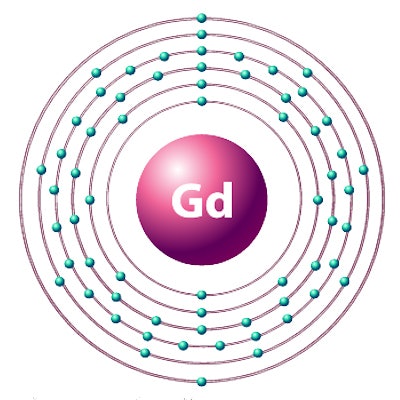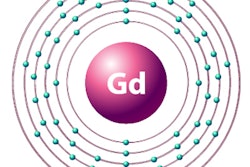
The ongoing debate over the safety of gadolinium-based contrast agents (GBCAs) and how their use may put radiologists at risk of lawsuits flared this week as the Journal of the American College of Radiology published a flurry of communications regarding a November paper on gadolinium deposition disease (GDD).
In an opinion published July 3, a team led by Dr. Emanuel Kanal of the University of Pittsburgh critiqued a paper written by Dr. H. Benjamin Harvey, JD, of Massachusetts General Hospital and colleagues that warned of an increase in lawsuits over GDD and urged clinicians to prioritize the use of gadoteridol, an agent the group believed was the least likely to deposit in organs, and to reserve other GBCAs for use "only when clinically advisable" in order to reduce radiologists' exposure to legal action (JACR, November 27).
Kanal and colleagues warned that there's a "lack of evidence that gadolinium retention results in any harmful clinical manifestations."
"We appreciate the value afforded to the reader from providing a legal opinion as to how radiologists may lower their professional liability," Kanal's group wrote. "We also certainly appreciate the benefits of gadoteridol ... and each of the GBCA available for use today. However, we would be remiss by not ... pointing out that what may be best for any given patient may well differ from that which Harvey et al feel may generate the least risk for the radiologist."
In a similar vein, Dr. Jeffrey Rogg of Rhode Island Hospital in Providence took Harvey's group to task in a letter published on July 8, stating that Harvey's report suggests that if a hospital isn't using gadoteridol as its primary GBCA, it is putting its radiologists at legal risk. But the scientific evidence just isn't robust enough to make that claim, according to Rogg.
"The entire entity of 'gadolinium deposition disease' is controversial, beset with legal risk for physicians attempting to do what is best for our patients," he wrote. "I feel that Harvey et al increase our risk through their strong statements, which ignore the frailty of the facts and disregard the published positions of both the [American Medical Association] and the [American College of Radiology]."
In response, Harvey and colleagues on July 9 restated their conviction that GDD "has created a risk management exposure," and cautioned against confusing "potential legal risk with a health risk."
"To be clear, we did not claim that one GBCA was safer for a patient than another," Harvey's group wrote. "In fact, we drew attention to the lack of clinical data to support even the existence of GDD. Our position is focused squarely on the potential legal risk. The thrust of our position is that the radiology community should not ignore the potential legal risk created by GDD, even if the prevailing literature suggests no meaningful health risk."




.fFmgij6Hin.png?auto=compress%2Cformat&fit=crop&h=100&q=70&w=100)




.fFmgij6Hin.png?auto=compress%2Cformat&fit=crop&h=167&q=70&w=250)











